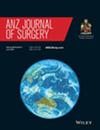Single breast incision for breast conservation surgery and sentinel lymph node biopsy: a systematic review
Abstract
Background
Breast conservation surgery and sentinel lymph node biopsy via a single incision allows excision of tumours from all quadrants of the breast, with access to both axillary and internal mammary nodal basins with no additional incisions.
Objectives
This systematic review aims to consolidate the current literature on the efficacy, safety, functional and cosmetic outcomes of single-incision breast conserving surgery and sentinel lymph node biopsy.
Data sources and review methods
A comprehensive search of Pubmed, EMBASE, Medline and GoogleScholar was conducted from inception to 7th July 2024 for all peer-reviewed articles assessing breast conserving surgery and sentinel lymph node biopsy via single incision using PRISMA guidelines.
Results
The literature search generated 426 articles. 400 were excluded by abstract review with the remaining 26 articles reviewed in full. An additional three articles were retrieved from review of full article reference lists. 13 articles were excluded, leaving 10 articles meeting the inclusion criteria. The technique demonstrated success across all quadrants of the breast. Eight studies documented successful axillary dissection completed via a single incision. Four studies compared the single-incision approach to the conventional two-incision technique. There was no difference in complication rates. The single-incision technique was associated with higher patient satisfaction and reduced post-operative axillary pain.
Conclusion
Single-incision breast conservation surgery and sentinel lymph node biopsy is surgically safe and can be feasible for tumours in all quadrants of the breast and is associated with improvement in cosmesis, pain and patient satisfaction. Further studies are required to confirm its long-term oncological safety.


 求助内容:
求助内容: 应助结果提醒方式:
应助结果提醒方式:


